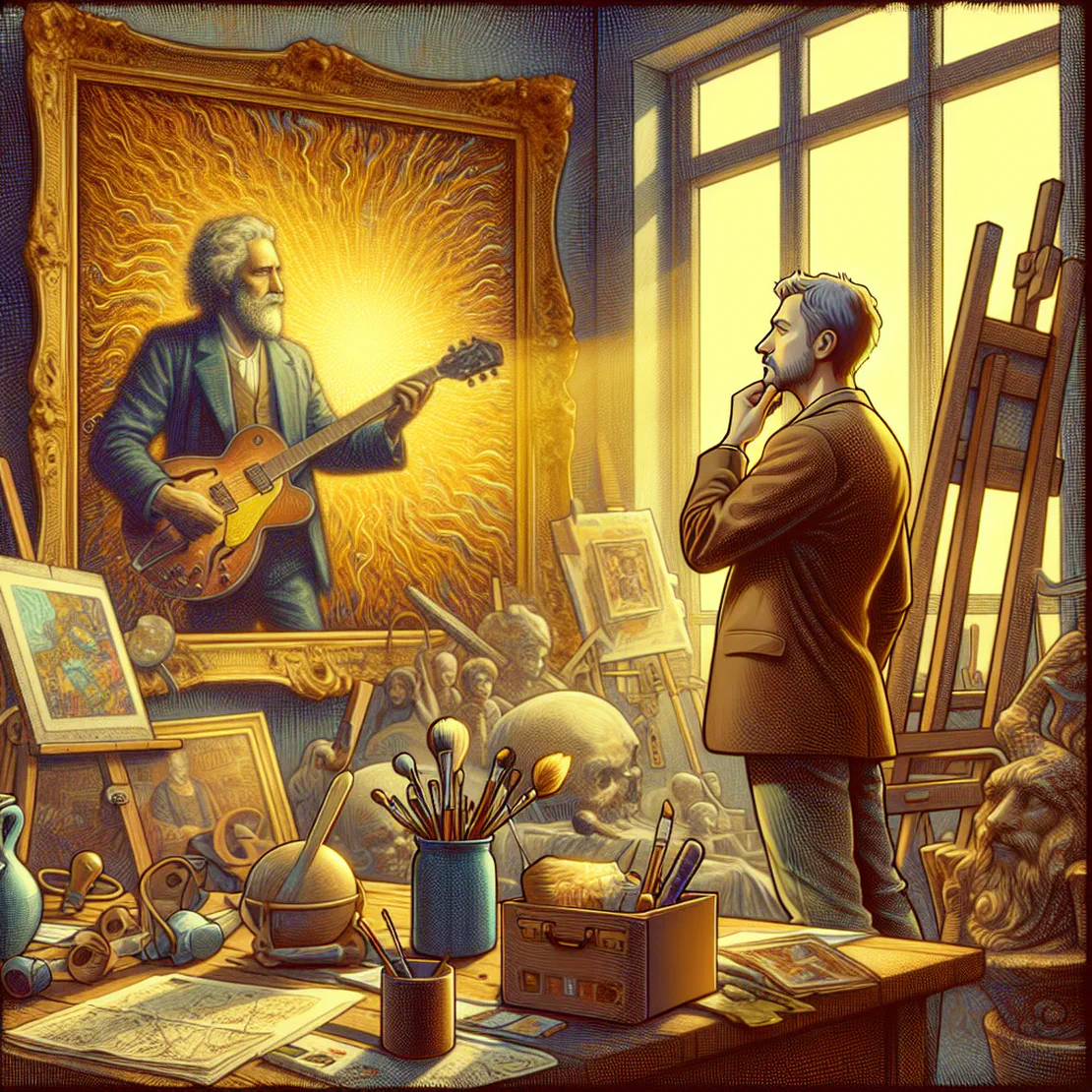
Biblical Series Introduction To The Idea Of God
- The Jordan B. Peterson Podcast
- Art , Spirit , Context , History , Meaning , Most popular
- April 12, 2020
Table of Contents
At a Glance
-
Power and Responsibility - “The tools themselves are crazily powerful, but that’s not necessarily an untrammeled good.” This highlights the importance of considering the impact of technological advancements.
-
Original Artwork - “An original work of art contains time. A photograph is one instant, but a portrait is you layered on you, layered on you, layered on you.” This emphasizes the unique value and context provided by original artwork compared to reproductions.
-
Context and Significance - “The historical context isn’t the object, but it depends on what you mean by the object. Often people, when they buy a piece of a painting, are buying the historical context.” This underscores the significance of understanding the broader context in which an artwork or object exists.
-
Rational vs. Emotional Value - “It’s exactly the same. It’s a perfect fidelity reproduction. You can do such a thing. Well, it is at the level of detail, but not at the level of context.” This highlights the distinction between rational and emotional value in appreciating objects or artworks.
-
Legacy and Cultural Significance - “It’s why you can’t tell it’s Elvis Presley’s guitar by looking at it. Yeah, but why would you want it? That’s when was there any rational reason?” This emphasizes the importance of cultural significance and personal connection in appreciating historical objects or artworks.
What to Do
-
Embracing Context Over Fidelity - The original work of art, containing historical context and thickness over time, is more valuable than a high-fidelity reproduction. This context is not only about the artist’s intentions but also the broader cultural and social environment in which the artwork was created.
-
Understanding Value Beyond Physical Appearance - The value of an object lies not just in its physical appearance but also in its historical significance, emotional resonance, and the story it tells. When considering the purchase of a piece of art or an artifact, think beyond its material value and consider what it represents and signifies.
-
The Significance of Original Works - Original works contain the spirit of their creators and the time period in which they were made. This is what gives them their unique value and cannot be replicated exactly by high-fidelity reproductions, no matter how advanced technology becomes.
-
Contextualizing Artifacts and Objects - When dealing with artifacts or objects that have historical significance, consider not just the object itself but also its context—when it was created, who made it, what circumstances surrounded its creation, and why it is important to you or others. This broader understanding can deepen your appreciation of the artifact’s value.
-
The Emotional Connection to Objects - There are times when buying an original object (like a guitar owned by Elvis Presley) makes more sense than acquiring a perfect replica, simply because of the emotional connection and historical significance it carries. The emotional appeal of owning something authentic can outweigh practical considerations.
-
Looking Beyond Rational Reasoning - Sometimes, there’s no rational reason for wanting an original object over its identical reproduction. It might be about the emotional value or the sense of history attached to the original. This is a personal choice that may not make sense to others but is important for those who make it.
-
Preserving Cultural Heritage - Consider preserving and passing down cultural heritage by valuing and respecting the significance of artifacts, art, and objects created in different times and places. This approach honors their creators, their time period, and helps in maintaining our shared history.
-
Understanding the ‘Why’ Behind Purchases - When deciding to buy something—especially an artifact or piece of art that has historical significance—stop and consider why you’re making this choice. Is it for a rational reason (like monetary value), emotional reasons (such as nostalgia, sentimentality, or the desire to own something unique), or perhaps a mix of both?
What to Get
- 12 Rules for Life: An Antidote to Chaos by Jordan Peterson - Amazon
- Maps of Meaning: The Architecture of Belief by Jordan Peterson - Amazon - For delving deeper into topics covered in the podcast topic.
- The Bible - Amazon
Summary
In this engaging podcast episode, the host and guest delve into various topics, including art, creativity, and the value of original works. The conversation begins with the guest sharing their experience visiting a museum in New York, where they saw incredible Renaissance masterpieces. They reflect on how an original work of art contains the spirit of the artist who created it, giving it a unique “thickness” that can’t be replicated by high-fidelity reproductions.
The guest highlights that this thickness is not just about the physical object itself but also about its historical context and the creative process involved in its creation. They use the example of Elvis Presley’s guitar to illustrate how owning an original piece can evoke a sense of connection and significance, even if it’s just a replica. This sparked a thought-provoking discussion on why people value original works over reproductions, despite their identical physical characteristics.
The conversation also touches on the idea that art and creativity are not solely about the physical object itself but also about its context and the experiences associated with it. The guest emphasizes that owning an original work is not just about possessing a valuable item; it’s about being part of a larger narrative and history. This nuanced perspective encourages listeners to reevaluate their understanding of art, creativity, and the value we place on original works.
The episode concludes with a call to action, inviting listeners to explore more thought-provoking ideas and concepts through Jordan B. Peterson’s books, courses, and online resources. The podcast ends with a reminder to stay tuned for next week’s episode, which promises to delve into Genesis as part of the Biblical series.
Throughout this engaging conversation, the hosts and guests touch on various fascinating topics, including the intersection of art, creativity, and human experience. Listeners are encouraged to reflect on their own values and perspectives on original works and consider exploring more in-depth discussions through Jordan B. Peterson’s content.


